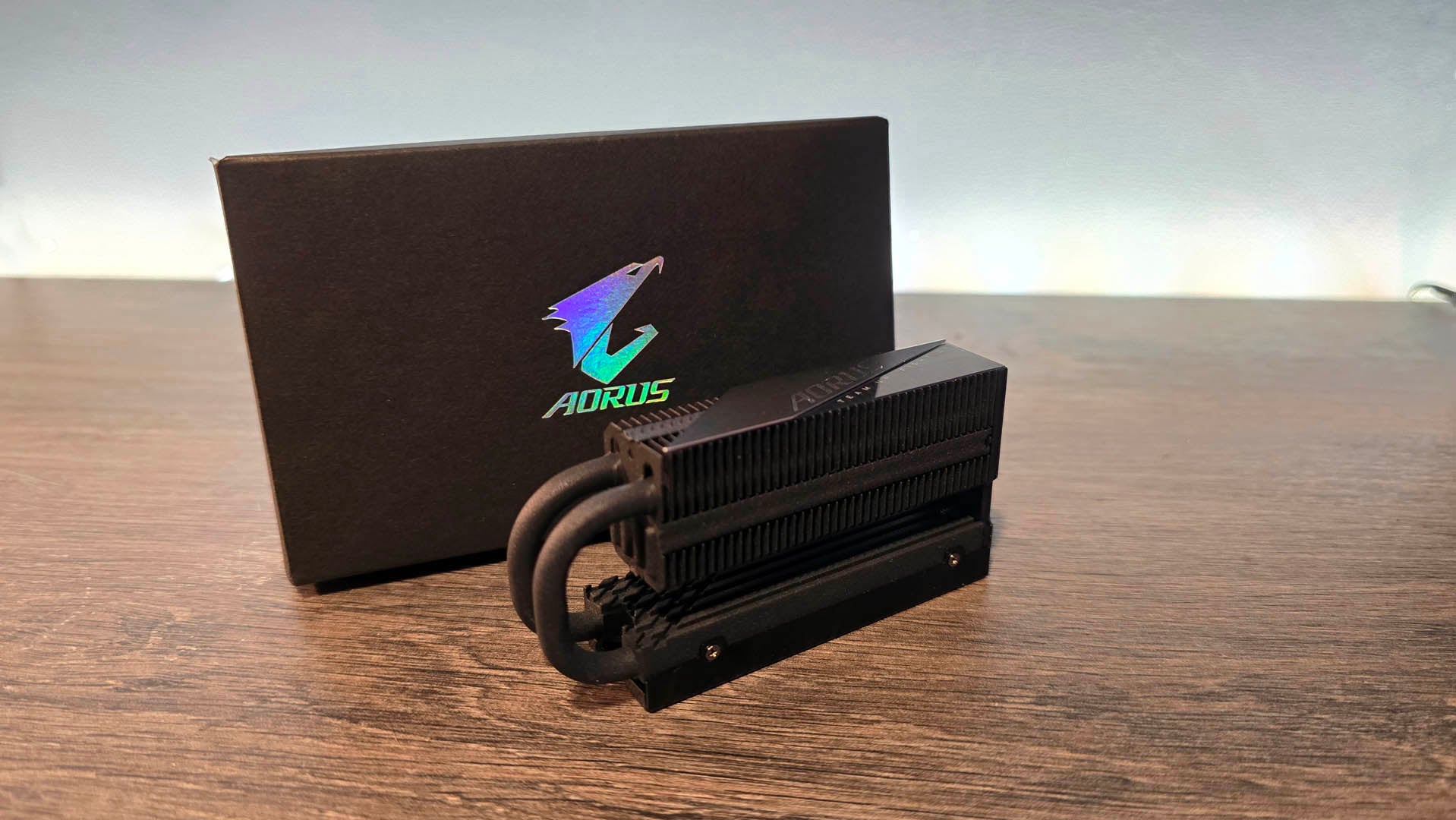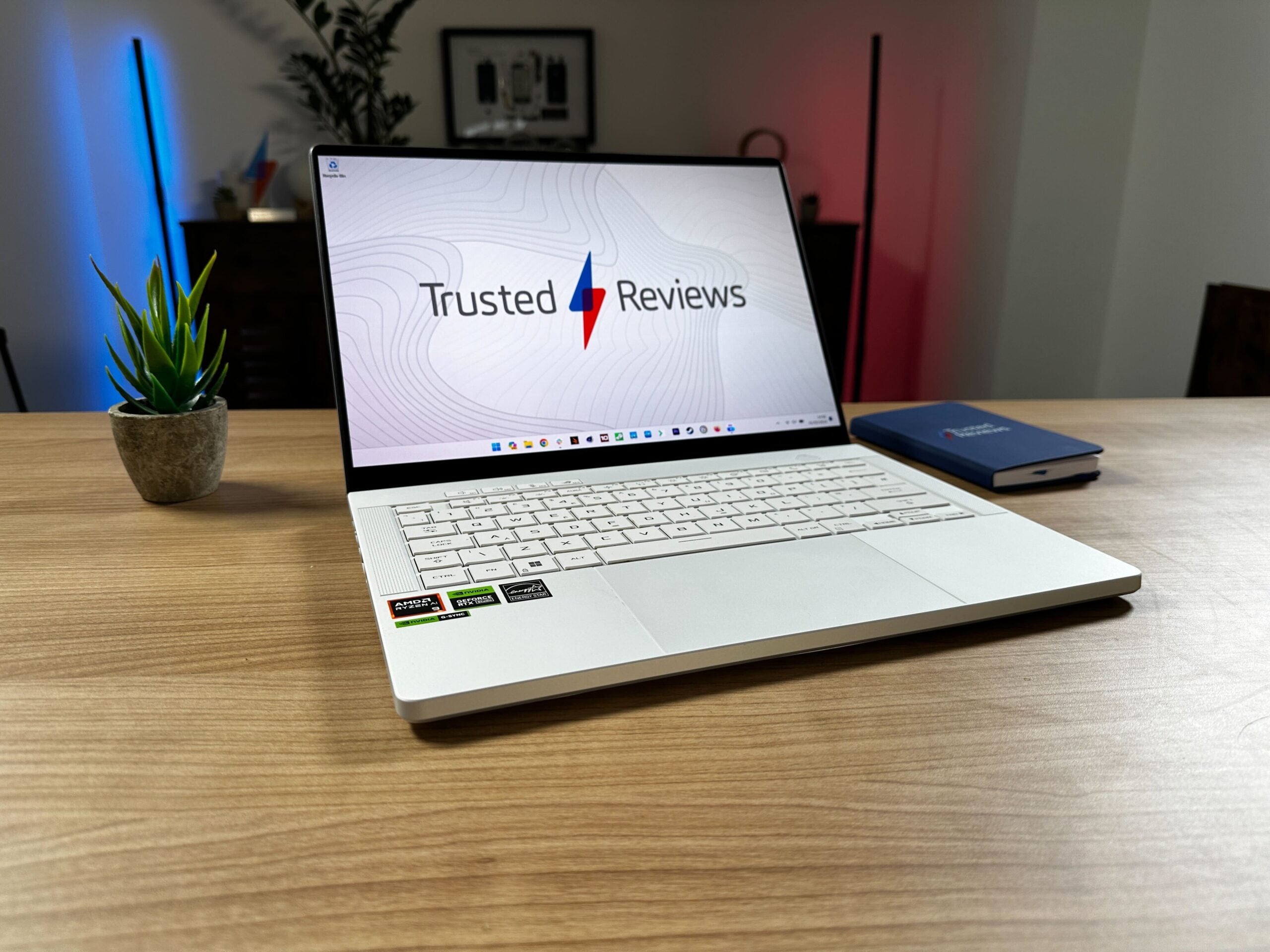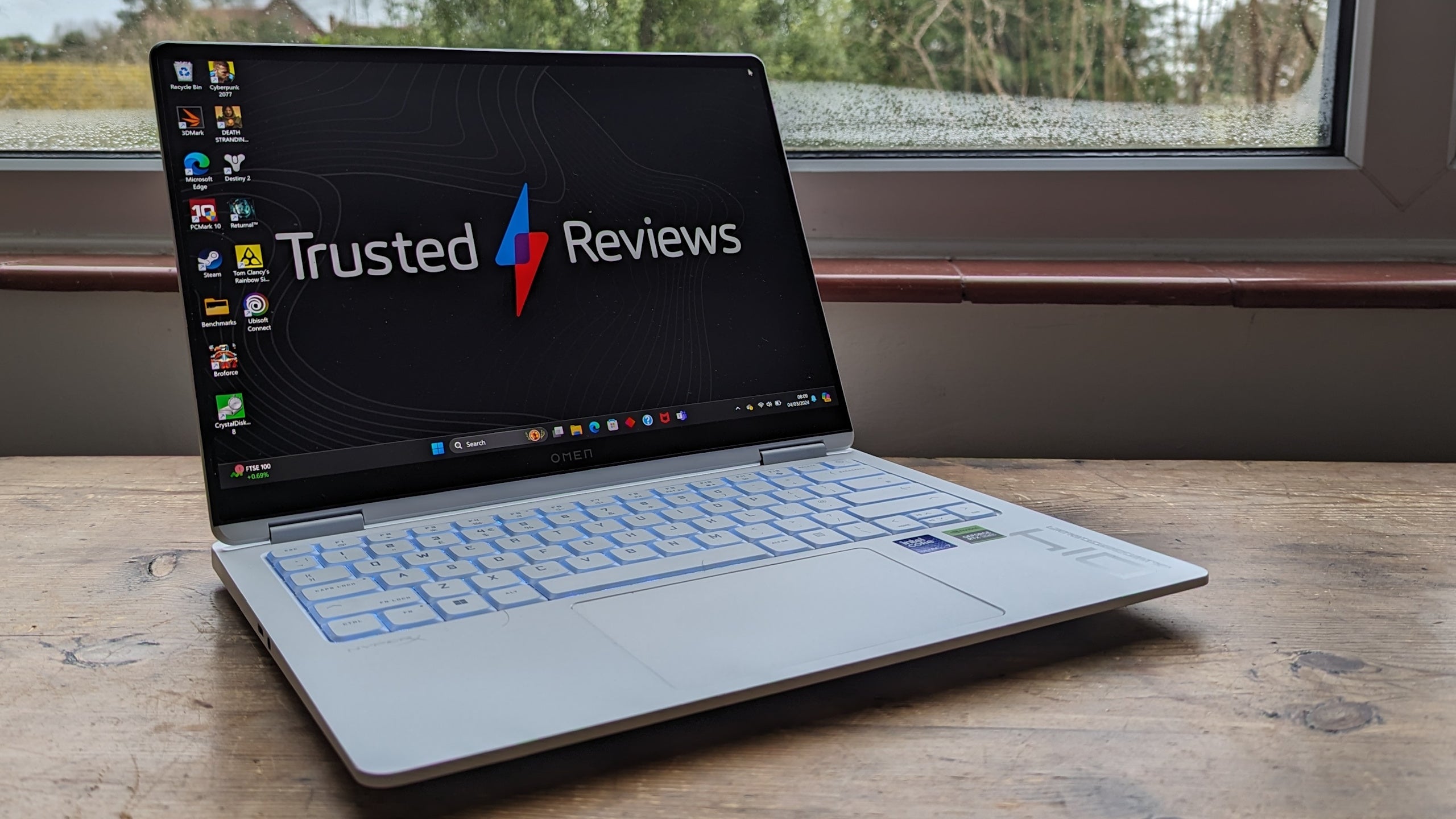Roccat Vulcan II Review
RGB flair can't save this expensive but limited keyboard.








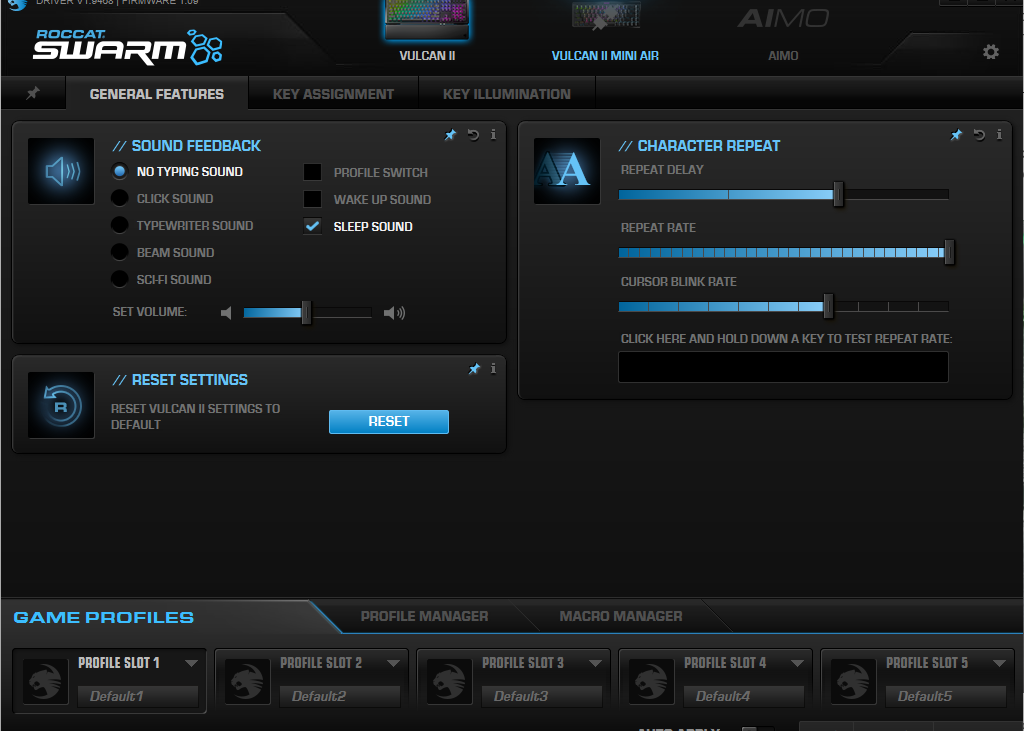
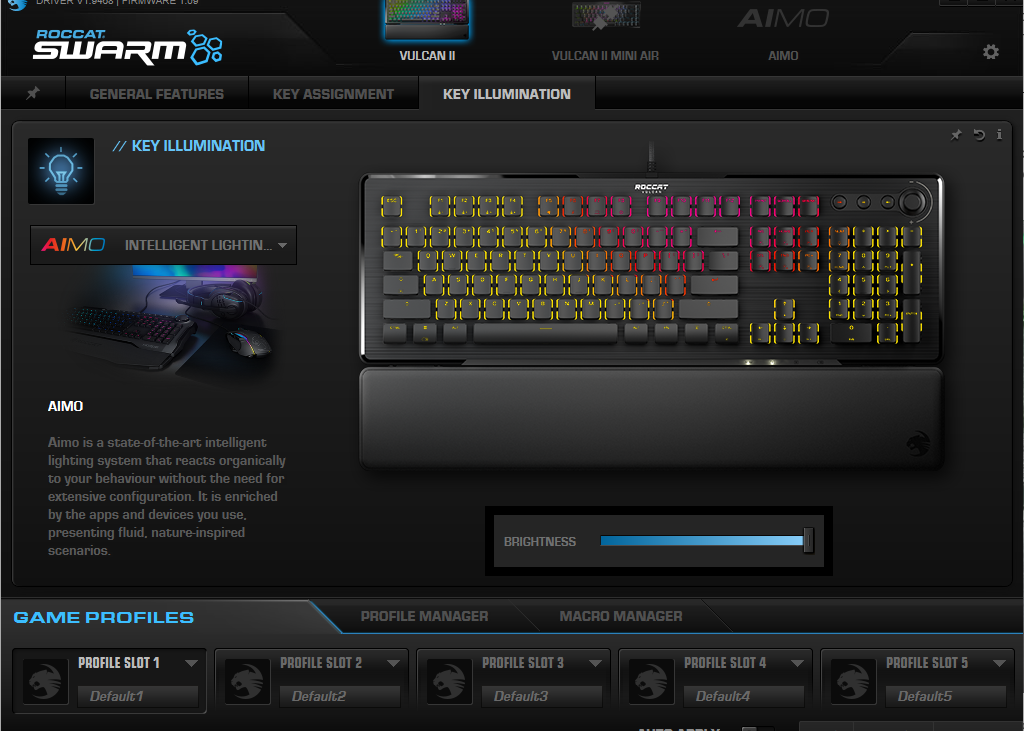

Verdict
It may be astoundingly big on its RGB flair, but the Roccat Vulcan II keyboard is still hard to recommend to most at this price point. No wireless connectivity or USB hub feels like a step backwards at £150, and the smooth keys, while nice and fast, choose form over function.
Pros
- Gorgeous RGB paired with low-profile keycaps
- Wrist-rest and media dial
Cons
- Software is showing its age
- Slippery and shows fingerprints
- Wired with no USB passthrough
Key Features
- Maximum RGBTall, transparent switches paired will low-profile keycaps allow more light to peek through the deck.
- Smooth or snappy switchesAvailable in Tactile Brown or Linear Red-style Titan II mechanical switches, you can choose the type to suit your needs.
- EZ Shift supportMultiple layers of programmable buttons can be activated with a simple key combination.
Introduction
The Roccat Vulcan II is here to grace your desk with bags of RGB across a full-size set of keys. But, does it deliver good value for money at its high price?
Packing either Linear Red or Tactile Brown Titan II switches – not even under the hood – this control centre goes all-in when it comes to the power of light, allowing for grand colour waves to suit your setup as well as achieving near-imperceivable levels of latency.
It’s not a wireless keyboard, though. Roccat does offer the same tech in a small package for those who demand portability. Instead, you get a handy wrist rest, a control dial and media keys for your music, and more room to display those enthusiastic lighting dreams you’re always concocting.
Design
- Slim metal look
- Unobstructed RGB
- Centre-mounted undetachable USB cable
The full-fat Vulcan II keyboard comes in either black or white flavours to suit your dark den or bright and cosy corner. Rather than sinking below the chassis, the low deck puts the Titan II switches on full display. The reason? RGB flair that’s anything but subtle. In a good way.
The transparent switches mean each RGB LED underneath shines through without obstruction. If you demand bright, in-your-face lighting to suit your setup, you’re set. And if you need it in a small form factor, Roccat still has you covered with the rest of the Vulcan lineup.

The whole package of the Roccat Vulcan II is low-profile. Its lean triangular design houses full-size switches topped with low-profile keycaps to avoid occluding the signature lighting flair. The metal deck keeps flex to a minimum. Paired with the low actuation point of the mechanical switches, you’re unlikely to feel it shifting under your average strokes.
Even the wrist rest is surprisingly flat, barely lifting your hands at all, but sitting at a low enough angle to feed seamlessly into the lift of the board itself. Your fingers are gracefully positioned just high enough to remain comfortable. It isn’t magnetic like the Corsair K70 Core, but the snap-in plastic is far sturdier than some implementations we’ve seen.
If you need a little more lift, two-stage feet can be found on the underside and feel surprisingly solid. Despite the lengthy cable port protruding from the centre of the board, there’s no sign of a USB hub on this one, which is a real shame at this price. At least there’s a tactile volume dial in the top-right corner with click-to-mute functionality and some lightly clicky media keys.
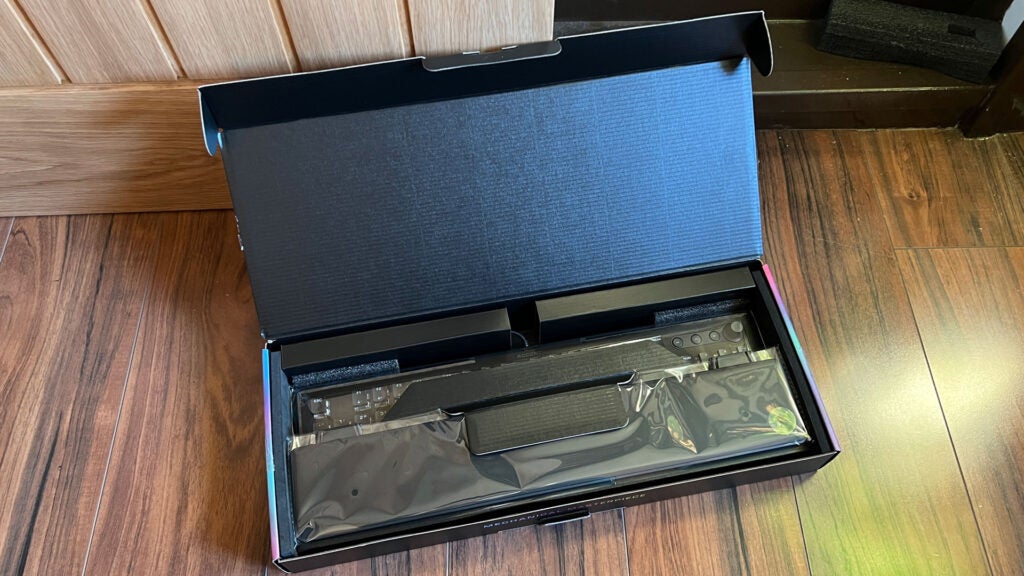
Improvements could be made to the packaging experience from a sustainability perspective. Both the keyboard and the wrist rest are individually packaged into plastic sleeves, the cushioning foam could just as easily be some folded cardboard, and the thin plastic peel around each edge of the board is wholly unnecessary,
Performance
- Smooth and relatively quiet experience
- Traditional non-optical mechanical switches
- Keys can feel slippery and, over time, oily.
Mechanical switches mean there’s virtually no time between a key actuating and your PC recognising your intent. Input lag is nigh-imperceivable, with a wired connection guaranteeing it if you’re going pro.
With switches like these, the input bottleneck will likely be in your monitor. If that’s a concern, you might want to look into the best gaming monitors or something like Nvidia Reflex to make sure you’re getting everything you can out of your setup.
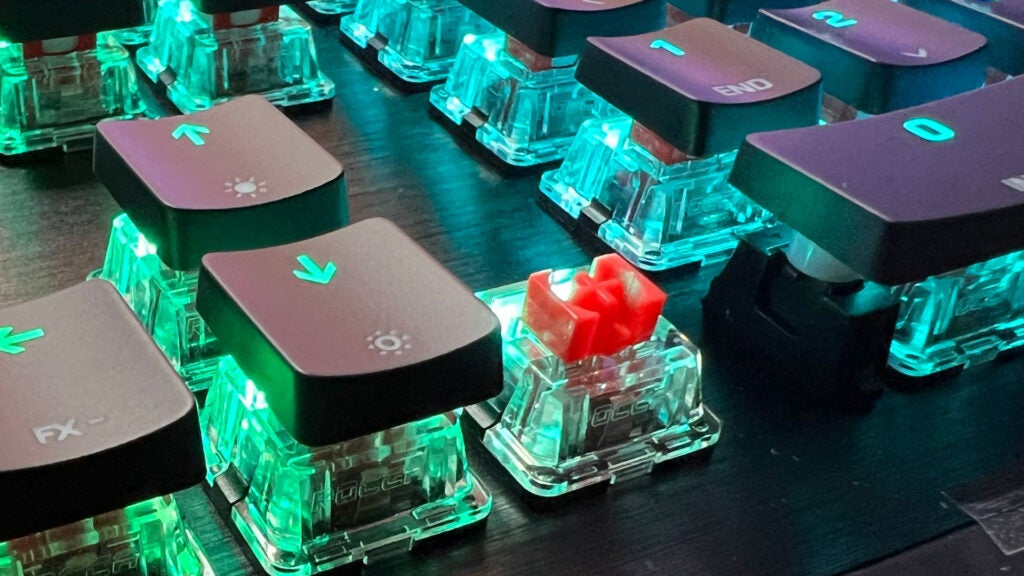
On a 100Hz 1440p IPS panel like mine, there’s little chance of noticing input lag here. In-game actions are instantaneous, and typing out this review feels incredibly smooth. My fingers glide along the keys and the characters appear on-screen immediately.
The TITAN II Linear Red switches my review unit shipped with are as smooth as they come. The relatively short travel distance means you’ll bottom out with even the lightest touch, and the return to neutral has an audible clack as it snaps back. There’s no dampening going on as far as I can note, yet there’s no metallic ping to speak of unlike the smaller Logitech G Pro or the full-size Das Keyboard 6 Professional.
But do these perks mean the Roccat Vulcan II is a perfect keyboard? No. There’s personal preference at play. The space between each key can be a bit much, and their smooth coating can prove slippery if you type at speed and are prone to oily fingerprints.

In a cruel twist of fate, these aren’t the same lightning-fast optical switches found in the smaller, cheaper Roccat Vulkan II Mini Air – which is wireless to boot. Most are unlikely to notice the difference, but it’s interesting to note.
Like its smaller sibling, though, the keycaps of the Roccat Vulcan II are easily swapped out. Pick up low-profile caps to retain the board’s signature RGB look, and you can add more grip around the WASD cluster or grab ergonomic keys that curve inward like on the Keychron Q1 Max.
One thing that can’t be changed to suit is the switch actuation point. This can be a problem given the short, snappy travel of lightning-fast optical switches can invite plenty of accidental actuations.

Currently available through analogue switches on the Razer Huntsman V2 Analog, it would have been grand to see Roccat bring some form of adjustable actuation here. If you rest your fingers on the keys while in hiding and don’t want to risk giving away your position, it’s something to consider.
Software and lighting
- Unintuitive Roccat Swarm software
- Per-key lighting with AIMO support for compatible products
- On-the-fly layer adjustment for heavy macro management
Lighting being the major selling point of the Roccat Vulcan II, downloading the positively retro-looking Roccat Swarm software will likely be your first port of call when plugging this one in. It won’t prompt a download on its own. You’ll have to go searching.
Unlike with the Roccat Vulcan II Mini Air, the software had no problem letting me tweak it to high heaven. The LEDs can be configured on a per-key basis, and there are plenty of preset lighting patterns to choose from if you don’t have the time or attention span to tailor each to your liking.



Deeper in there, you’ll find more or less everything you could want or expect from a keyboard configuration standpoint. You’re free to remap and macro each key, set layers, and change repeat input delays.
There’s nothing out of the ordinary here, but also nothing special. It’s a functional software experience that could simply use a lick of paint.
Roccat’s own AIMO lighting ecosystem isn’t as well connected as Razer’s Chroma or Corsair’s iCue solution. You won’t be pairing competing products together to form a complex array of reactive lighting here. But if you just want a keyboard with as much lighting on show as possible, you’ll find it here.
Latest deals
Should you buy it?
You want a full-sized gaming keyboard that doesn’t hide its RGB flair
In an ultra-competitive gaming keyboard market, the Roccat Vulcan II stands out with its uncompromised approach to RGB lighting. Going for that pastel look? This one shines.
You’re looking to score the big bucks in a competition
The Roccat Vulcan II feels fantastic to use, but its tall, smooth, and slippery keys carry too much risk of accidental actuation. If you’re hyper-competitive, it creates a conundrum: adapt or face an avoidable defeat.
Final Thoughts
The Roccat Vulcan II is far from perfect. The included wrist rest is smooth, hard, and doesn’t use a safe magnetic clasp like the Corsair K70 Core. It also lacks the plush padding and RGB trim of the Razer Huntsman Elite. Being wired only and not even including a passthrough USB port feels disappointing at this price range as well.
It’s just hard not to fall for the unique RGB flair. It’s also lightning fast where it counts – just consider opting for the safer Brown switches if you’re big on Valorant or CSGO. The extra bump of each press will save your bacon.
Still, at £150, the Roccat Vulcan II isn’t the best deal right now. It’s brilliant if you want to bathe your gaming corner with glorious colour, but it’s hard to ignore the clunky software and lack of wider support outside of the Roccat ecosystem. If lighting isn’t a big deal for you, save yourself £30 and grab the classic Logitech G613 instead, or check out the best gaming keyboards around if there’s more wiggle room in your budget.
How we test
We use every keyboard we test for at least a week. During that time, we’ll check it for ease of use and put it through its paces across games and typical PC use.
We also check each keyboard’s software to see how easy it is to customise and set
Used over the course of a week across work and play on multiple devices and used to write this review.
Tested and compared against various other keyboards in and around its price range and feature bracket
FAQs
No, there’s no extra USB port available here.
There’s no 2.4Ghz or Bluetooth wireless support on offer with the Roccat Vulcan II.
The volume dial has a tactile feel as it moves between small stages.



